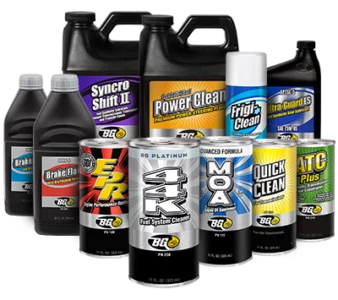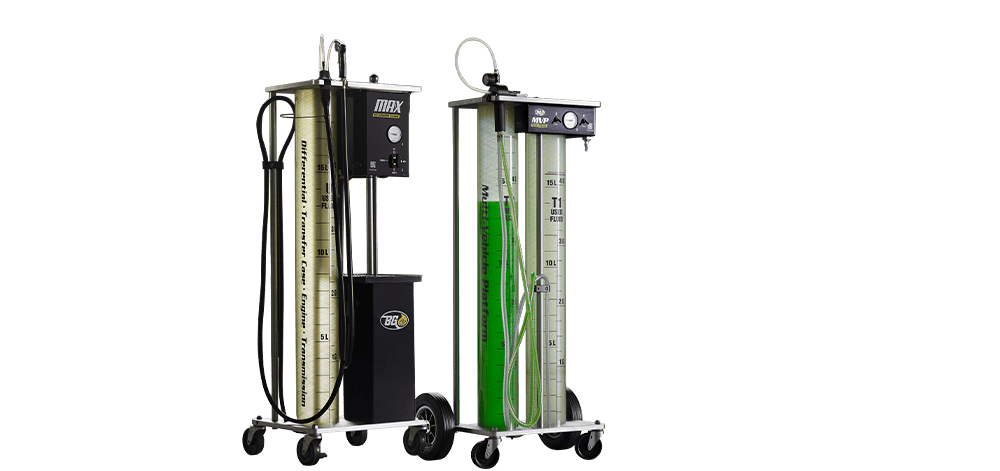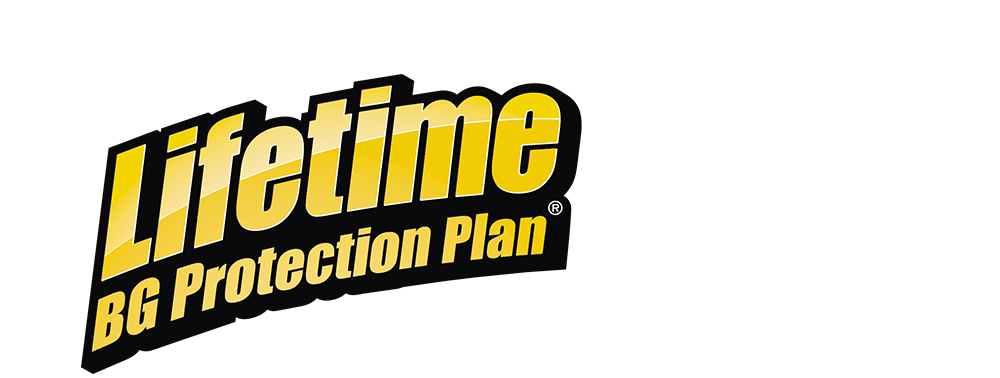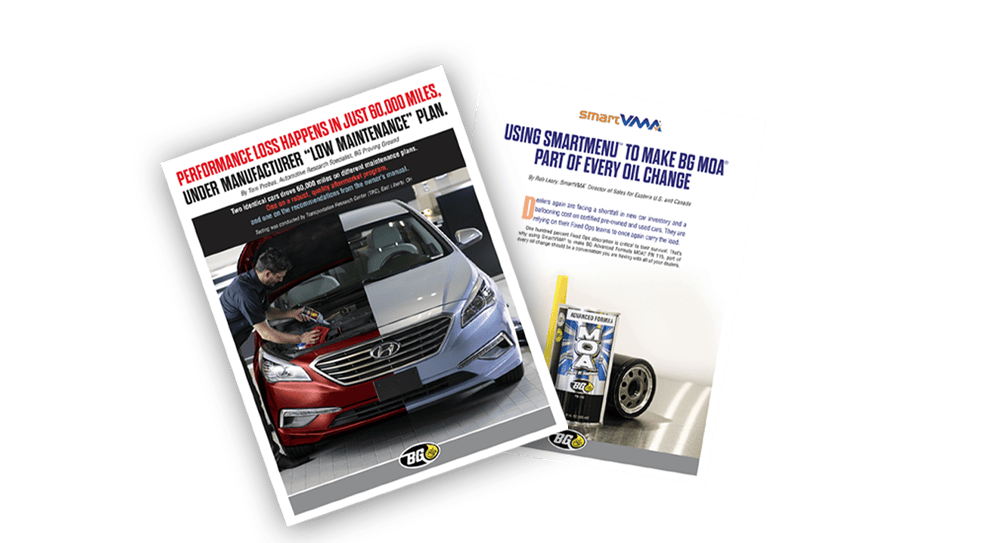Volkswagen/Audi 3.0L Supercharger GDI Engines
BG Platinum® Fuel System Service
BG AE04 Intake Adaptor, PN E101-2034
INSTRUCTIONS
IMPORTANT! Read product Safety Data Sheet before use. Make sure this service is performed in a well-ventilated area.
CAUTION! Never use a throttle depressor to keep the engine above idle during service.
- Add BG Platinum® 44K® to fuel tank.
- For best results, add BG Platinum® 44K® to a full tank of gas. If the tank is not full, fill it up after the service.
- Fill supply tool with BG Platinum® Air Intake, Valve & Combustion Chamber Cleaner.
CAUTION! This cleaner will damage paint and certain plastic materials. - Verify the BG AE04 Intake Adaptor, PN E101-2034, is tightly attached to supply hose.
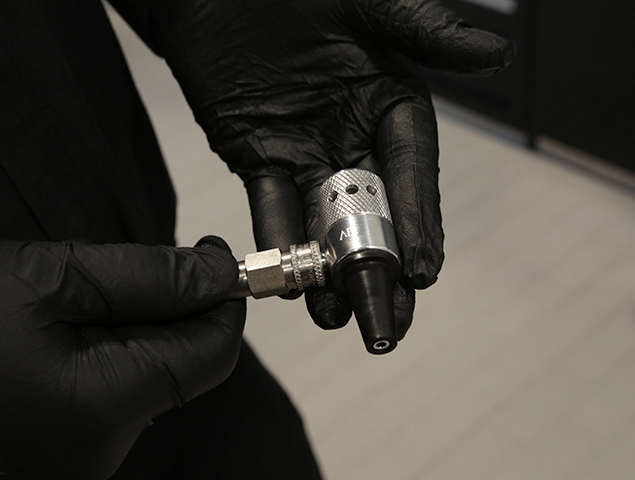
- Locate both MAP sensors on the intake manifold. The service will be divided between these two MAP sensor ports. Half the service will be performed through the left side and half through the right side.
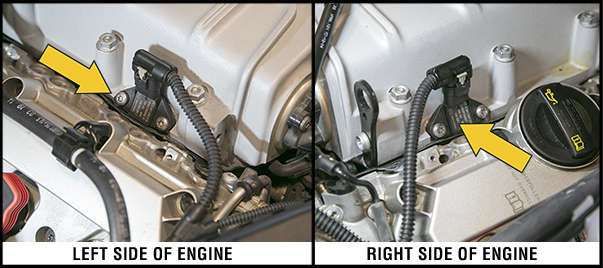
- Disconnect one MAP sensor by removing the screws on the MAP sensor mounting. Unplug and set the MAP sensor aside.
- Use a shop towel to remove any oil residue from inside the MAP sensor port.
- Reinstall the MAP sensor mounting screws by hand to prevent excess vacuum leakage from open screw holes.
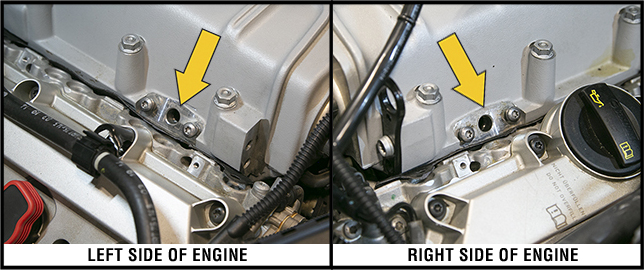
- Insert the adaptor into the MAP sensor port.
- Rotate adaptor vent cap so arrow is pointing upward. Make sure air flow is not restricted and the holes on the adaptor remain uncovered.
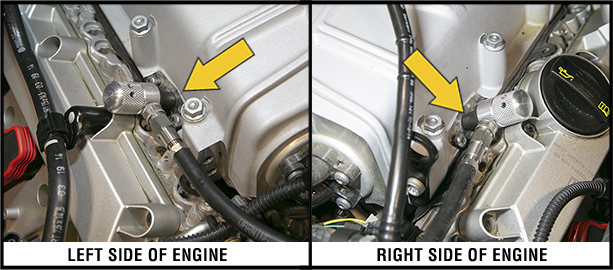
- Start engine and allow vehicle to warm up to operating temperature.
- While the engine is running, unplug the supercharger bypass actuator (Pictured Below). Failure to do this will prevent the engine from revving properly during the service.
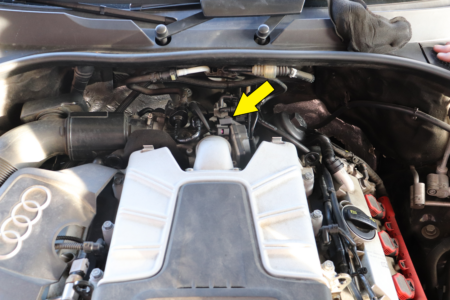
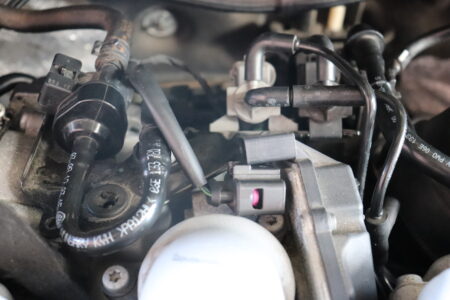
Install the BG Rev-It® (PN E101-4110) into the vehicle. Follow the on screen instructions to ensure the vehicle is being revved to 3500 RPM throughout the Platinum service. If the BG Rev-It® is not available, the vehicle MUST be revved manually following the “IMPORTANT” steps below!
IMPORTANT! While performing the service, rev the engine (snap throttle) quickly three times every 45 seconds to a target RPM of 3,500. This will ensure that any cleaner accumulation has cleared. If the vehicle revs cannot be raised above 2,500 RPM during the snap throttle or the vehicle does not return to idle, the service should not be performed.
Warning! Failure to rev the vehicle during the service may result in engine damage!- Open ball valve on supply hose.
- The adaptor will administer 22 oz. (650 mL) of cleaner in 25–40 minutes depending on engine vacuum. When supply tool is empty, close ball valve and allow the engine to idle for 15 minutes.
- Make sure the engine stays running when switching sides. If the engine is turned off or stalls, the sensors must all be plugged back in and the codes will have to be reset prior to proceeding.
- Remove the adaptor and reinstall the first MAP sensor.
- Disconnect the second MAP sensor by removing the screws on the MAP sensor mounting. Unplug and set the MAP sensor aside.
- Use a shop towel to remove any oil residue from inside the MAP sensor port.
- Reinstall the MAP sensor mounting screws by hand to prevent excess vacuum leakage from open screw holes.
- Insert the adaptor into the MAP sensor port.
- Rotate adaptor vent cap so the arrow is pointing upward. Make sure the airflow is not restricted and the holes on the adaptor remain uncovered.

- Add a second 22 oz. (650 mL) can of cleaner to the supply tool and open the ball valve.
- When supply tool is empty, close ball valve and turn engine off.
- Remove the adaptor and reinstall the MAP sensor.
- Reconnect the supercharger bypass actuator.
- Clear any codes that may have set from disconnecting sensors and actuator.
- Immediately test drive the vehicle for at least 15 minutes to clear any residual product.
NOTE: If the vehicle cannot be driven after the service, the vehicle must idle for 30 minutes to clear any residual product.
Warning! Failure to test drive or idle the vehicle after service may result in engine damage. - Clear any codes that may have been set

